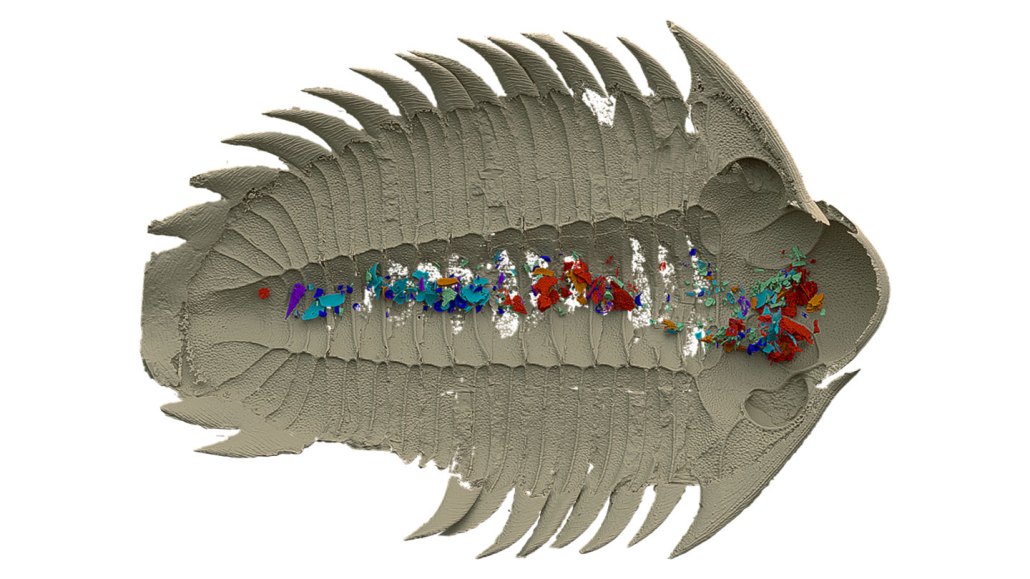A one-of-a-kind trilobite fossil hints at what and how these creatures ate
3-D scan reveals the consumed remains of shells, sea urchin–like creatures and other bottom-dwellers

A high-resolution 3-D scan of a fossilized trilobite reveals what the ancient marine arthropod ate before it died: shell fragments, bits of sea urchin–like creatures and other bottom-dwellers (represented in shades of red and blue).
P.Kraft et al/Nature 2023








